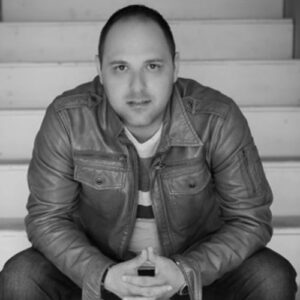
As an actor, a four year degree in acting, musical theatre, or theater arts is an accomplishment to say the least. Obtaining a BFA will open a few more doors along your journey, whichever way you are headed. However, once you’ve graduated where does a young aspiring actor put their focus? If you’re like the teachers I had in conservatory, everything was geared toward pounding that pavement and hitting the audition scene. There is no judgement in my saying that. You should hit the audition scene, but what about continuing your training and advancing your skills in the meantime?
As an acting coach, college professor and Artistic Director, I have noticed over the past five to ten years, since the rise of social media, the actor’s need for ongoing training beyond the university is devoid of any necessity.
Yet, having worked within the dance industry for more than a decade, I look at the dancers I have worked with and taking class is a crucial part of their everyday lives. Yes, in a big city studio like New York City or Los Angeles, who’s teaching can bring popularity to any given class, depending on that instructor’s professional credits. But the mindset of continuing to train, continuing to progress, and continuing to practice your craft is necessary and present. The same could be said of many professions. When I lived in New York City, I had a one bedroom apartment in the heart of Hell’s Kitchen. 50th and 9th, it was a great little neighborhood! Every day, if I was home, I always knew when it was 10am and 4pm. The guy that lived above me was a trumpet player. He played for several Broadway shows and during Christmastime, played for Radio City. 22 shows a week or something crazy like that. He started practicing at 10am and most days stopped around 4pm. I’m sure he took a lunch break. This was his craft. This was his profession and he put in the required work to make sure he could continue getting paid for his art. 22 shows a week worth!
It’s an ongoing process and one that must be constantly nurtured. Of course, these are my own words, but I would like to believe that Constantin Stanislavki, Stella Adler, Sanford Meisner, and Uta Hagen, among many others would agree with me. Anne Bogart in her book The Viewpoints Book states, “The theater is the only artistic discipline that does not encourage or insist upon the ongoing-training of it’s practitioners. The result: rusty or inflexible actors who ofter feel unsatisfied or uninspired.” Bogart goes on to say “Training forges relationships, develops skills and provides an opportunity for continued growth.”
Let me give you my definition of ongoing training. Ongoing or continued training for the actor can encompass many different things. First off, there’s taking class. Acting, Script Analysis, On Camera, Self Tape, Movement for the Actor, Auditions, Scene Study, etc…There are a plethora of classes to choose from. This includes Musical Theater classes as well. Second, there’s production practice. Being in a show. Doing your art night after night. Learning from different people and through your own experiences. The third type of training is adjacent training. Something that connects to your craft or profession but may not be directly in line with what you want to study. For example, let’s say an actor is having trouble connecting to their body. Maybe a movement class is needed. Maybe a beginning ballet class to help with alignment. Yoga perhaps. Focus on the breath. These types of classes aren’t directly connected to your primary focus, but by stepping out of the collegiate box you may have been put in, this new mindset and perspective may just be exactly what is needed to get you back on track.
Actor training, in its necessity, must be valued over the perception of the industry. Social Media followers, in today’s climate, seem to have a tight grip on casting. However, once that callback is done or that short stint has wrapped, then what? Where does an actor go when there is no foundational technique or training to rely on? Ongoing acting training serves more than just the purpose of education. This type of ongoing training not only builds on what you have already learned and helps to hone your skills, but it can also help with guidance, self confidence, industry struggles and blockages, and career advice. Finding the right class is key. Finding the right teacher is gold.
As for myself, I created The Actor’s Establishment during a global pandemic for this main reason, to give back to my community and offer actors a chance to practice their craft and continue training while we wait for the green light to get back onstage. And until that day comes, I urge you, to continue the training process. We can never know too much, never be too well read, and never stop the process of growth.
Go ahead. Take a class. Let me know how it goes.
Parental Advice During a Pandemic: If My Parents Had Only Known


As an accomplished Actor, Producer, Director, and Acting Coach, Jason James has garnered himself a voice for the theatrical community. With multiple acting acknowledgements under his belt and a groundbreaking achievement during his tenure at the Sturges Center for the Fine Arts as Producing Artistic Director, Mr. James is a true creative force to be studied. And for very good reason, with more than twenty years of experience, Mr. James understands the importance of integrating solid fundamental acting techniques with the key principle of understanding "why" into the developing repertoire of an actor. Mr. Jason James has brought this same mindset and mastery into his current creative endeavor, The Actor’s Establishment, affectionately known as TAE. TAE doesn't just teach actors technique. An open space is created so the actor can establish who he or she is as an artist. Mr. James incorporates his past teaching and lecturing credits and unique perspective to meet each artist where they are, while giving them a safe atmosphere to guide and equip them along their acting journey. Jason James is both L.A.’s best-kept secret and a growing force to be reckoned with in teaching actors about their ever-growing industry. He holds a BFA in Musical Theatre from AMDA, College and Conservatory of the Performing Arts and an MFA in Performance Pedagogy from Loyola Marymount University.
Read Full Profile© 2021 TheatreArtLife. All rights reserved.

Thank you so much for reading, but you have now reached your free article limit for this month.
Our contributors are currently writing more articles for you to enjoy.
To keep reading, all you have to do is become a subscriber and then you can read unlimited articles anytime.
Your investment will help us continue to ignite connections across the globe in live entertainment and build this community for industry professionals.